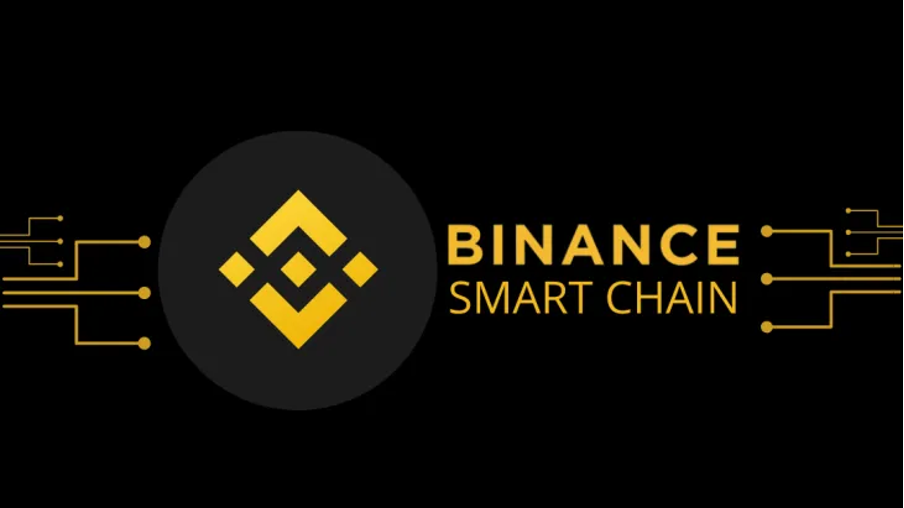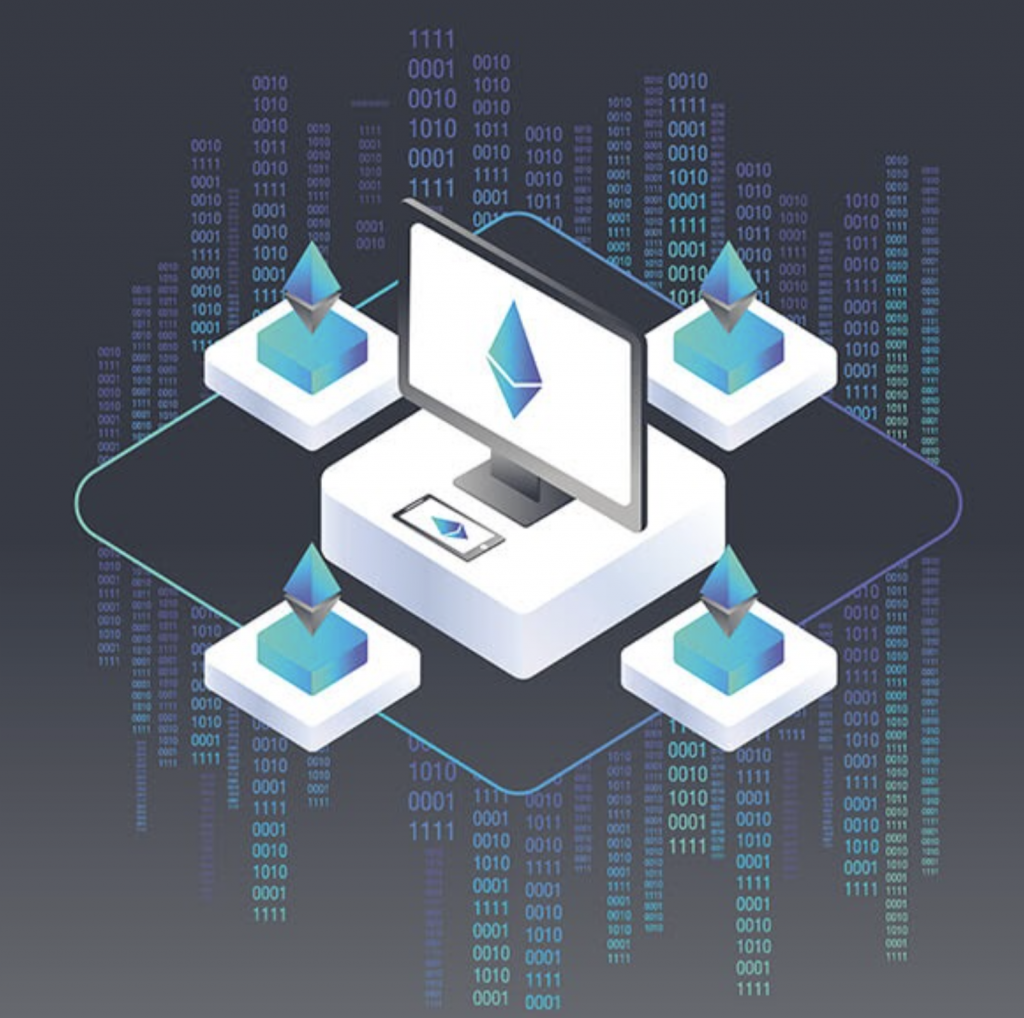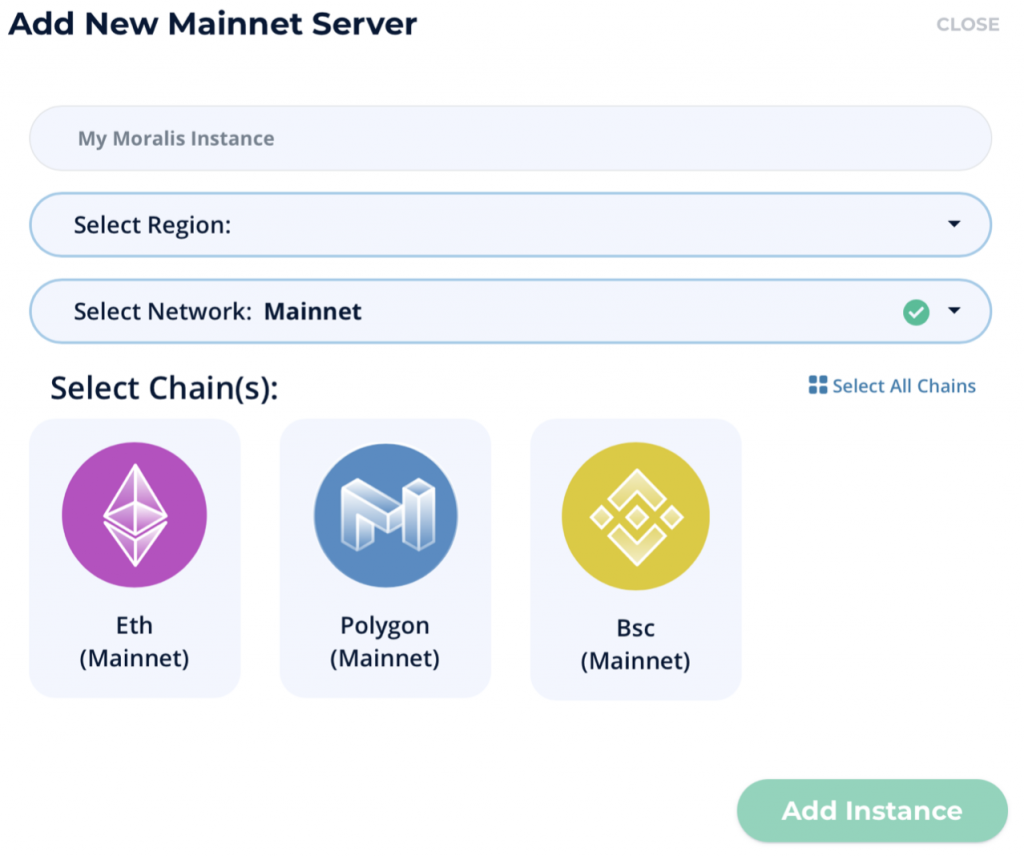Traditionally, developing Web2 applications is much easier than building dApps (decentralized applications) for Web3. This is not particularly strange, since the emergence of the decentralized web remains in its infancy. This means that dApp development still lacks some of the fundamental tools and middleware that Web2 has to make development more feasible. Furthermore, Web3 is characterized by different blockchains, meaning that there are several different development environments to choose from. Some of the most popular blockchains are Ethereum, Polygon, and Binance Smart Chain. To narrow down the field, we will take this article to look closer at how Moralis makes dApp development a breeze, and more specifically, how to build BSC dApps with Moralis.
The Web3 ecosystem is growing by the day, and the easiest way to develop Web3 apps or dApps is Moralis. Moralis is the premier blockchain middleware, enabling quick and effortless Web3 dApp development. This allows the Web3 development scene to become more developer-friendly and eschew some of the hassle traditionally associated with Web3 development. With the help of Moralis, we can, for example, shorten the time it takes to build BSC dApps from months to mere days. As this is the case, we will look closer at how to build BSC dApps with Moralis.
So, how is this possible? Moralis is the best development platform for Web3, which allows its users to save time and increase growth/engagement. Moralis provides a complete dApp development experience and brings together everything you need to develop and deploy dApps. Even more convenient is that signing up with Moralis is entirely free, and you can start developing right away!
What is BSC (Binance Smart Chain)?
Creating a better understanding of what BSC, or Binance Smart Chain, is might be the best starting point for understanding how to build BSC dApps. As this is the case, we will use this section to dive deeper into Binance Smart Chain.
The Binance Chain, which is an entirely separate blockchain from BSC, was introduced in 2019. The main task of the Binance Chain was to facilitate fast, reliable, and, most importantly, decentralized transactions. However, as the purpose of this chain was to enable trading, it lacked flexibility which resulted in scalability issues. To solve this “flaw” in Binance Chain’s design, we were introduced to BSC.

One thing separating the Binance Chain from BSC, is that the latter is compatible with the Ethereum Virtual Machine (EVM). The reasoning for introducing BSC was to enable the introduction of smart contracts into the Binance ecosystem. All while leaving the high throughput to the Binance Chain instead. As a result, the two chains now work parallel with one another, meaning that BSC focuses on development while the Binance Chain focuses on facilitating transactions.
So, how does BSC function?
- Consensus Mechanism — BSC utilizes a Proof-of-Stake Authority (PoSA) mechanism. This is quite similar to a regular Proof-of-Stake consensus mechanism, where the participants stake BNB to become validators. However, if a validator proposes a valid block in this system, they are rewarded with the transaction fees from the transactions in that block.
- Cross-Chain Compatibility — The Binance system utilizes something known as “dual-chain” architecture. This structure allows users to seamlessly transfer assets from one of the Binance chains to the other. This allows for great synergy between the two chains since the users efficiently can utilize the fast transaction speeds facilitated by the Binance Chain while developing dApps on BSC.
To summarize, both the Binance Chain and BSC work together to create an ecosystem where both trade and development of dApps are prioritized. This means that BSC extends the functionalities of the original chain, and complements the speed of Binance Chain with increased flexibility. This means that the creation of the BSC further allows for complex dApp development.
If you are interested in learning more about the Binance Smart Chain, we recommend visiting their official website. Here you will find more in-depth information on how the chain works and what it entails.
Web3 dApp Development
When developing Web3 applications, there are three essential elements that we need to focus on. These three components are essentially the UI (user interface), smart contracts, and the backend. All dApps have these three components, and they are crucial for fully functioning applications. However, traditional dApp development has some issues, and we will take a look at them and how they can be solved.

Frontend dApp development for decentralized applications is quite similar to developing traditional applications. This means that the same principles apply and that the same skill is required. As this is the case, developers need to have mastered JavaScript along with HTML and CSS. However, one way in which the frontend development of Web3 deviates from Web2 is that you need Web3.js. This is a Web3 library that connects the UI and smart contracts of your applications.
However, the issues with traditional dApp development arise when it comes to the backend side of dApps. Not everyone knows how to develop a functioning backend for dApps, and the process requires a vast amount of resources and time. As the process is difficult and time-consuming, the market has been demanding a solution – and it is Moralis.
Moralis allows you to build serverless dApps with a single snippet of code, and getting started only takes a few minutes. This means that developers from the traditional application development field can develop dApps with ease, as they do not need to focus on the backend. Instead, Moralis handles all the complex Web3 backend stuff, leaving the developers to focus on the frontend.
What is Moralis?
Moralis is the best solution for making the development process of dApps as comfortable and efficient as possible. We have mentioned some of the benefits that Moralis provides, but nonetheless, let’s look at the services that Moralis provides its users.
As a Moralis user, you are provided with an infinitely scalable backend infrastructure for your dApps. This means that you as a developer can focus on essential things such as smart contracts and the UI to enable the best possible user experiences for your applications.

Moralis, therefore, takes care of all the complex Web3 backend development that’s essential to making your dApps work. This means that you can avoid setting up a complex backend with the help of Moralis. This will not only save you the effort but will also help you save valuable time and resources. Furthermore, Moralis supplies you as a developer with many valuable tools that will expedite the development of Web3 applications.
One useful tool that is integrated with Moralis is a MetaMask authentication extension. Moralis has native support for MetaMask, which allows users to authenticate themselves via the extension. Moreover, as it is possible to set up an infinitely scalable database with Moralis, we can also use this opportunity to save further information about users as an example. If you are interested in learning more about MetaMask and the Moralis integration, then check out this article which is a full breakdown of MetaMask.
Furthermore, other useful tools provided by Moralis are native support for IPFS, Speedy Nodes, the Moralis NFT API, real-time alerts, cross-chain compatibility, and much more. If this seems interesting to you, we recommend that you sign up with Moralis for free! This will give you access to all these tools and much, much more.
How to Build BSC dApps with Moralis
With a more extensive understanding of dApp development and the value that Moralis brings to this market, we can move onto how to build BSC dApps. As Moralis is the natural choice for dApp developers, we’ll use Moralis as an example of building these applications.
As we recommend that you use Moralis to build BSC dApps, the first thing you want to do is sign up with Moralis. Signing up with Moralis is free, and it will give you access to all of the tools mentioned in the previous section. Once you have an account, we can start developing the dApp.
Server Setup for Building BSC dApps
To begin developing a BSC application, you will find a ”+ Create a new App” button at the top right of your browser. Clicking this button will initiate the first step in building your own BSC dApp.
Once this option is clicked, you will need to choose a server instance. Here you need to input a name, select a region, if you want to use the test/mainnets, and which blockchains you would like your project to be connected to. It is possible to choose more than one blockchain, as Moralis is able to sync transactions from multiple chains. As we are using BSC as an example, we should use this blockchain as one of the alternatives.

When you finish selecting your options, all you need to do is hit the ”Add Instance” button to finalize the process. However, getting the server going might take a few minutes, but it will be up and running shortly.
Local Dev Chain for building BSC dApps
After we have the server for our application up and running, we recommend setting up a local dev chain. Setting up a local dev chain is optional; however, this will tremendously help the development process.
We can do this by hosting our own local blockchain through some other applications. Two of the most popular ones are Ganache and Hardhat. If you want to learn more about Hardhat, we recommend reading the following article, which is a full breakdown of Hardhat. You can also watch either of the following videos explaining the process in more detail:
Furthermore, there are some other general things regarding dApp development to keep in mind when it comes to Moralis. You will also want to install the Moralis SDK (Software Development Kit), which can be done several ways; one example is through NPM.

You will also need to initialize Moralis to use it in your code. For this, you need access to the server URL and App ID. You can find this information by pressing the ”View Detail” button on your server instance.
Once you have initialized Moralis, you’ll have your BSC project going, and you can perform several different actions. You can, for example, now easily authenticate users with MetaMask. Additionally, you can store information about users, and also query this information from your database.

However, suppose you want a complete walkthrough of creating an application and some examples of using Moralis in your projects. In that case, we recommend that you take a closer look at the Moralis documentation. Furthermore, here is a video demonstrating how easy it is to build a BSC dApp with Moralis’ Speedy Nodes:
How to Build BSC dApps — Summary
It’s becoming more popular by the day to become a dApp developer, and the dApp and DeFi markets are booming. Traditionally, it has been quite the hassle to develop dApps, as the process is both time-consuming and resource-intense. However, as dApp development becomes more popular, demand for more developer-friendly solutions grows as well. This is where Moralis comes in.
Moralis makes the development process a lot easier for all developers, since they provide users with an infinitely scalable backend infrastructure, and other valuable tools such as Moralis’ Speedy Nodes. If you didn’t know, Moralis Speedy Nodes now also feature full WebSocket support! High-profile projects like SuperFarm, Polygon, NFTmall and others are already either partnering with Moralis or integrating Moralis’ innovative tech. This demonstrates how Moralis is the perfect middleware between your applications and the blockchains of your choice, such as BSC.
This makes the process of building BSC dApps far more manageable, and makes the entire process easy. To get started, all you need to do is set up a server, create a local dev chain, install the SDK and initialize Moralis. This can be done in minutes, and if you are already a knowledgeable developer, it will be effortless. This means that we can build a BSC dApp much easier by using Moralis, as it provides us with a backend so that you can entirely focus on the frontend and the user experience. As for building with BSC, we’ve already shown how to create a BSC token in five steps with Moralis or connect to BSC nodes!
If this sounds interesting to you, we urge you to sign up with Moralis today! It is entirely free, and you can begin developing your BSC dApps right away!
